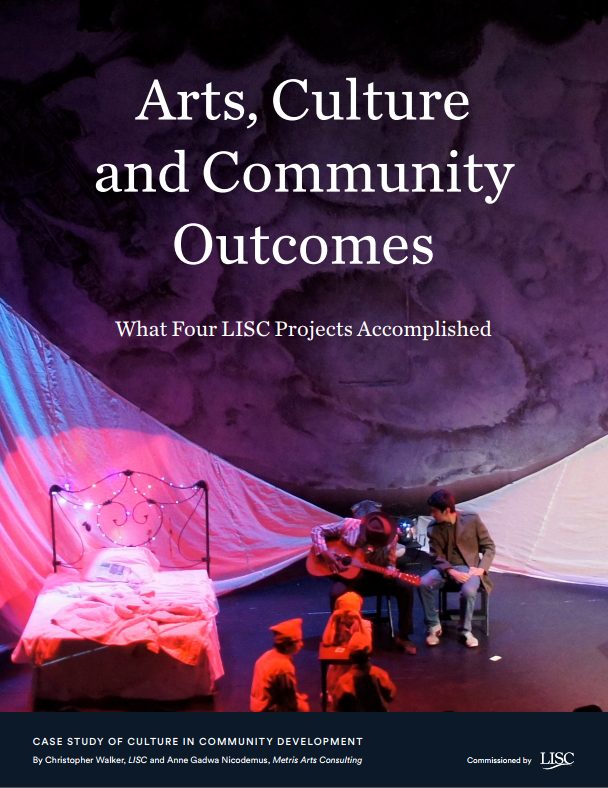Arts, Culture & Community Outcomes
A reflective report on LISC creative placemaking projects in four cities shows how community development intertwined with arts and culture can uplift neighborhoods, and bring excitement, income, pride and inspiration to the people involved.
Case Study of Culture in Community Development
In Duluth, Minnesota, the Gimaajii-Mino-Bimaadizimin community center offers home to the homeless and a rich enveloping experience of Native American culture. In Richmond, California, the East Bay Center for the Performing Arts builds character, appetite for social justice, and sometimes future careers through multicultural arts education for youth. A stretch of Penn Avenue in Pittsburgh’s Bloomfield-Garfield section has gone from vacancy, blight, and crime to an active mix of arts businesses amongst establishments that cater to neighborhood residents. And in Indianapolis’s Fountain Square, residents have their pick of long-time 24-hour diners and haute cuisine, part of a revitalized entertainment-and-arts district seeded by strategic investments in arts spaces
These communities are part of the portfolio of investments of the Local Initiatives Support Corporation (LISC) that embrace arts and culture as integral elements of economic and social change. In some cases, people’s participation in arts-and-cultural experiences shape and affirm personal and community identity and character. In other projects, artists and arts businesses underpin increasingly productive local economies. At times, these two outcomes are intertwined, such as when local artists committed to community work create opportunities for participation in arts-related programs for longtime residents, especially youth.
This paper uses the four programs cited above—in Duluth, Richmond, Pittsburgh, and Indianapolis— to analyze what arts and culture add to community development efforts, particularly insights into how these programs had an impact on economic and social change. All of these programs are explored in more depth as case studies, part of a series on the intersection of community development with arts and culture, published by LISC and Metris Arts Consulting. The series also includes papers on artists as leaders in community development and the economic benefits of arts-and-culture-led community development.
Related:

A case study of the East Bay Center for the Performing Arts, in a Richmond, CA building refurbished with LISC investment, uncovers multifaceted returns for the surrounding community: young people are reaping the benefits of arts instruction imbued with the values of mutual respect and social justice. And the renovated center, coupled with expanded cultural programming and public improvements nearby, has laid the groundwork for commercial renewal along an adjacent corridor.

When LISC invested to renovate three anchor entertainment venues in the Fountain Square neighborhood of Indianapolis, a renaissance was set in motion. The area has made a dramatic turnaround from market failure to stability to destination zone, inviting new businesses, housing stock, and people, too.

An arts-led strategy to enliven the Penn Avenue corridor in Pittsburgh's East End has catalyzed an incremental and organic change. Artists, arts-organizations and new businesses, including a range of nonprofits, have taken up residence, signaling the emergence of a vital and economically diverse district.

In Duluth, MN, the Gimaajii Mino-Bimaadizimin Native American cultural center has proved to be a powerfully transformative institution. From providing housing to formerly homeless families to a mosaic of cultural, social and educational offerings, the center, in a refurbished Y, fosters refuge and belonging, and bridges cultures within its walls and beyond.
